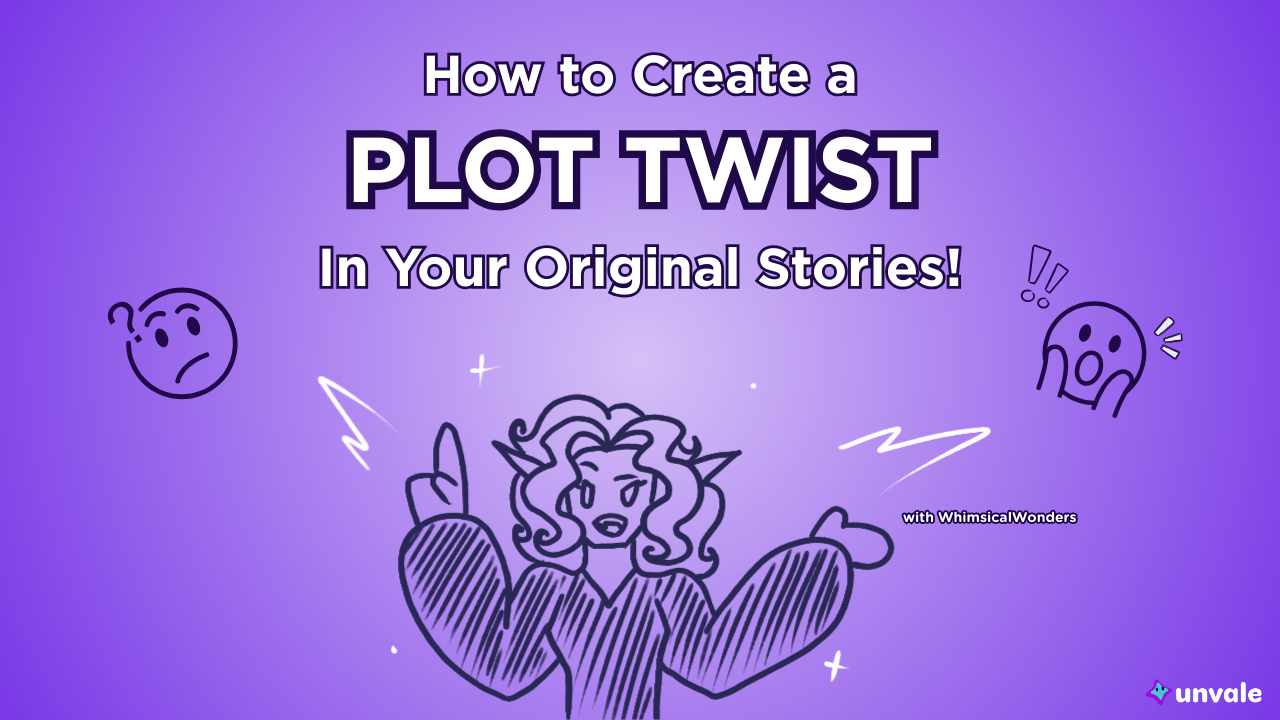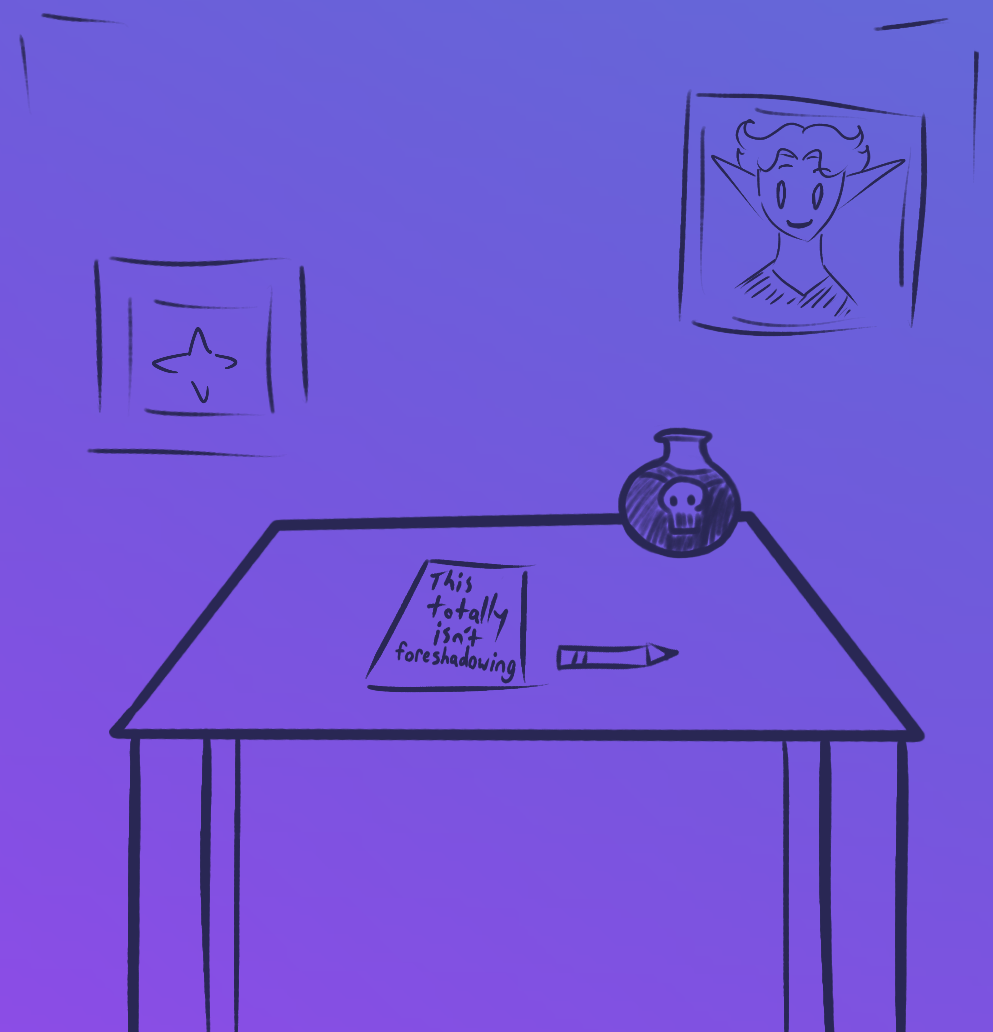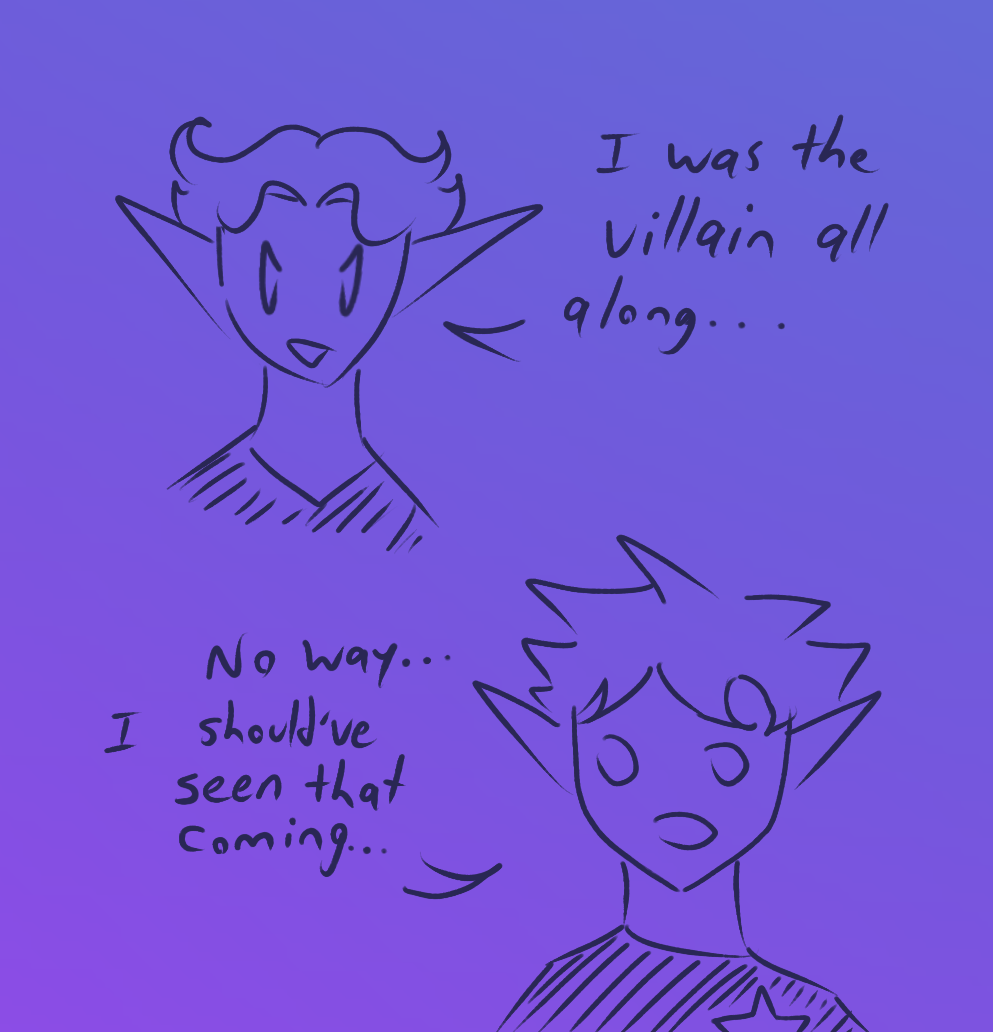How to Create a Plot Twist In Your Original Stories!

Ever wanted to make your story more interesting and add a little surprise to it? Well, maybe it's time to incorporate…a plot twist! Plot twists are a fun way to spice up your story, and leave your audience surprised in the process! But before we get into the twists and turns you can add to a story, if you need other tips for writing your stories, check out one of these articles!
- Tips for Using Mythology in Your OC Stories!
- Tips on Writing Hero and Villain OCs!
- How to Write a Fight Scene in Your Original Stories!
Now that we have that out of the way, let’s talk about plot twists!
What’s a plot twist?
First off, let me briefly explain what a plot twist is! A plot twist is when a story takes a turn that you didn’t expect. Maybe that all-powerful magic crystal was a fake, or the best friend of the hero turned out to be working with the villain. Plot twists can create extra excitement and leave a big impact in your story! So how do you create one in your own stories? Let’s talk about it!
Leave Foreshadowing and Hints throughout your Story!
With a plot twist, foreshadowing can make or break it! Too much foreshadowing, and there’s no twist. On the other hand, no foreshadowing can make the twist seem too unbelievable or unearned. Balance out the foreshadowing, and you’ll have a fun plot twist that surprises your audience and seems believable!
So what is foreshadowing? Foreshadowing is leaving little hints and warnings in your story that will say something about the future events. Foreshadowing could take place in a conversation, be in the form of an object, or other things as well! Depending on the kind of story you have, foreshadowing can be done differently too. If you need some ideas for foreshadowing, you could…
- Have a random statement from a character hint at the future
- Add a motif to a design that hints at the character’s true role
- An object in a room that hints at a character’s role or future events
- Symbolism that hints at the future events
The fun part about foreshadowing is that it can give your audience clues as to how the story’s events will play out, without directly telling them what will happen! For the people that can put the subtle pieces together and guess the twist before it happens, they get a nice “Aha! I knew it!” moment! For the people that don’t, they instead get a fun “I should’ve seen that coming!” moment.
It can be fun to foreshadow through character design too! If you want some design ideas for a potential plot twist villain, check out this article on designing a villain OC here!
The Power of Misdirection in Your Story!
Along with foreshadowing, misdirection is another way to help create a plot twist! Foreshadowing is fun, but the twist might become too obvious without something to balance it out. That’s why you can use something to distract your audience from the truth!
Something that seems like a hint, but actually isn’t, is called a red herring! A red herring can seem like foreshadowing, but actually leads your audience down a false trail. It can make your audience think they have the right answer, when really it was just a trick to make sure they don’t figure out the real twist! To create misdirection in your story, you could add things like…
- A character that seems suspicious but actually isn’t
- An object that seems like a clue but is unrelated
- A strange conversation that doesn’t have real foreshadowing in it
Leaving some fake hints throughout your story can help the twist feel more surprising! Combined with foreshadowing, all the hints are there, it’s just a matter of figuring out which hints are the real ones. However, just like with foreshadowing, it’s best not to overdo it! A good balance of both is key!

Build up the plot of your story!
Just like with any other story, you have to build up the plot! No build up or no stakes won’t make the plot twist rewarding. Why should the audience care about the twist? What makes it matter?
Building up the plot is essential to your story! Therefore, you’ll want to include events that create stakes or problems for your characters. For some ideas, you could have events such as…
- A plan gets sabotaged
- A character gets hurt
- A character gets kidnapped
- The situation has a time restraint
- Important items are stolen
Putting pressure on the characters can make the situation feel more intense! Building up the plot could include things like the characters finding clues too!
For more ideas on how to build up a plot, check out this article on writing a scary scene, where my co-writer goes over creating tension in a story!
Reveal your plot twist of your story!
Finally, you have to make the plot twist happen! Plot twists can be revealed in many different ways…you’ll want to make it satisfying! Depending on the story you’re writing, you might go about your plot twist a little differently than you would for another kind!
A plot twist’s placement can happen in different parts of the story, but oftentimes they’re placed somewhere around the climax or near the end! Some plot twists are dramatic, others take a more nonchalant approach. If you need some ideas for your plot twist, you could…
- Have the plot twist revealed during an intense moment
- Have the plot twist revealed during a villain’s monologue
- Have the plot twist revealed by a character unintentionally
- Have the plot twist revealed in the background of a scene
- Have the plot twist revealed casually
It’s up to you how you decide to reveal your plot twist! A plot twist doesn’t necessarily have to happen at the end of a story either. If it’s not as big of a reveal, it could take place earlier in your story!

If you’re looking for inspiration from the cool users of Unvale, check out these collaborative worlds that have had many twists and turns!
A plot twist can be a fun addition to your story for both you and your readers! Utilizing foreshadowing, misdirection, buildup, and the reveal itself will help you create a memorable plot twist in your original stories!
If you need inspiration for designing the characters of your story, there’s articles on how to use music for designing an OC, how to use things in your daily life for OC inspiration, how to make a Gijinka, and more!

